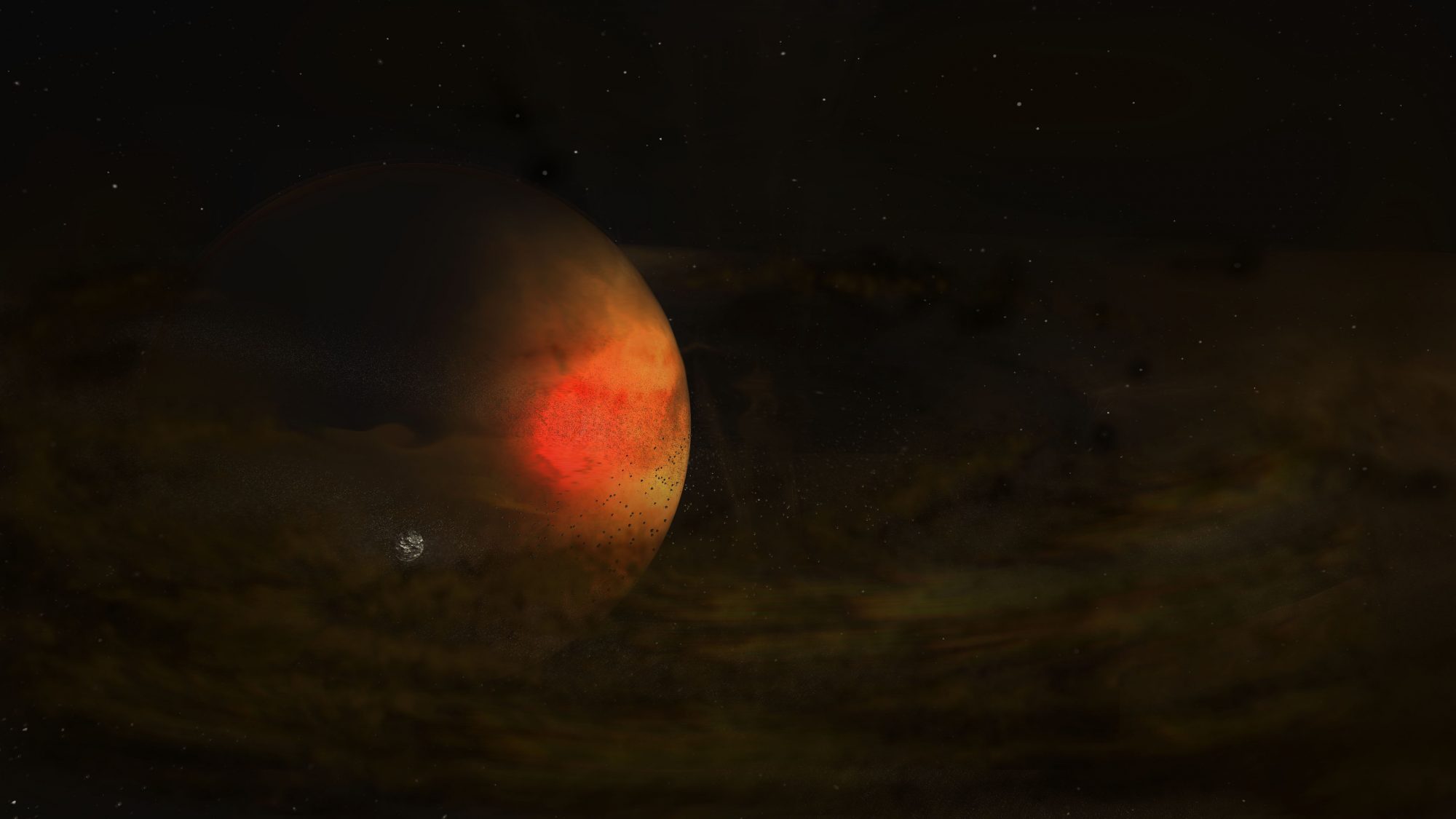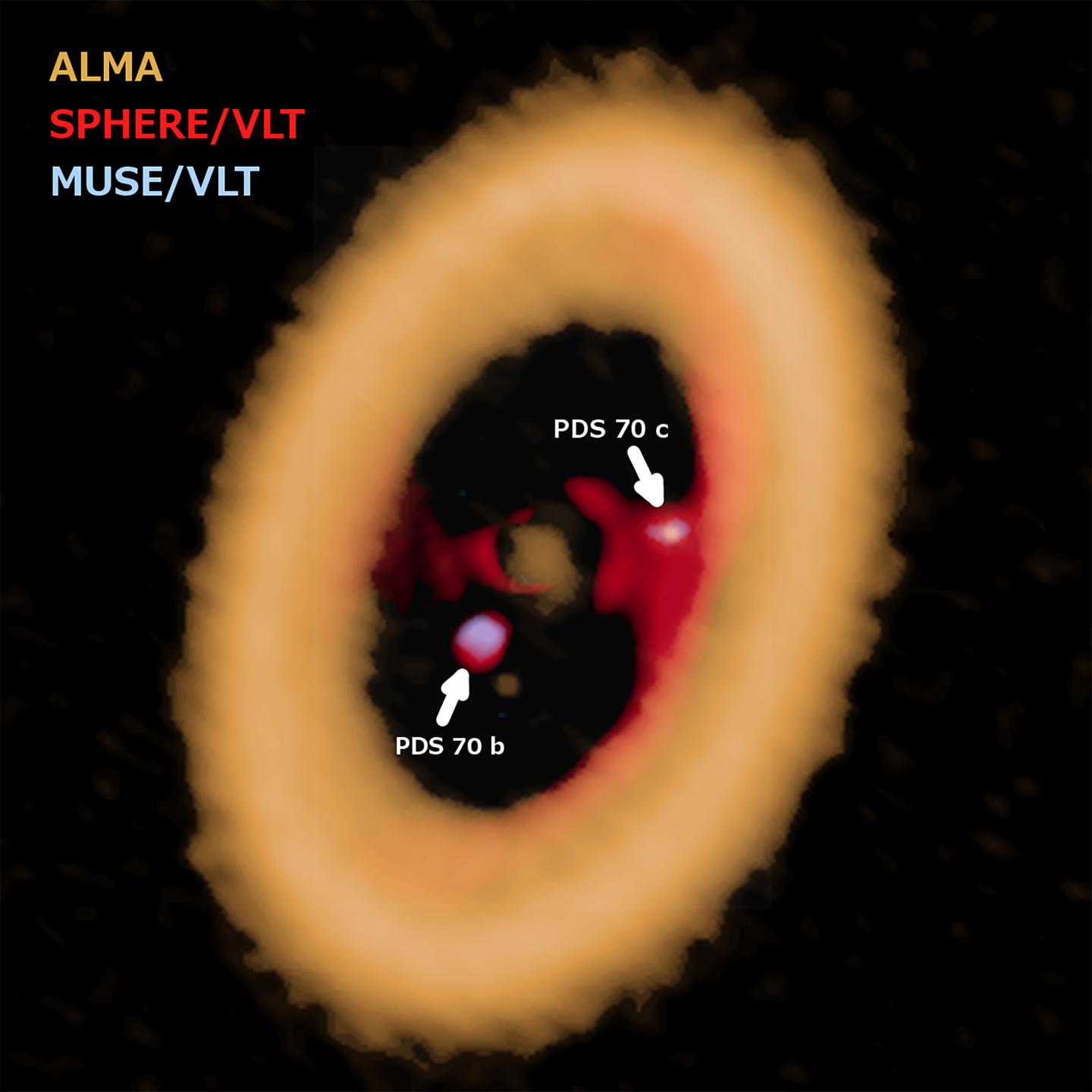Have you ever seen a moon being born?
It starts with a cloud of gas and dust. The cloud contracts into a disk and a star ignites at its center. Planetoids form around the star in the protoplanetary disk and grow into planets. Around the planets, in turn, are dust disks that eventually form moons. Up to that last step, this theory of solar system formation had long been confirmed by observations. But no telescope had yet discovered a dust disk around a planet.
Now one has. ALMA, the Atacama Large Millimeter/submillimeter Array made the first such observation in the young solar system of PDS 70, which is about 370 light years from Earth. The European Southern Observatory’s Very Large Telescope (VLT) had already confirmed the existence of two gas giants with Jupiter-size dimensions in that system. Now ALMA can also show that a dust disk has formed around the outer planet and might form multiple moons. With some patience, we might even be able to observe the birth of an exo-moon there.
“For the first time, we’ve found clear evidence for a circumplanetary disk, which supports many of the current theories of planetary formation,” says Andrea Isella of Rice University in Houston, one of the main authors of the study. The data has also uncovered two important differences between the two newly discovered planets. PDS 70b, which is closer to its star, is located at approximately the same distance from its star as Uranus from the Sun and is dragging a large amount of dust behind it, almost like a tail. “What this is and what it means for this planetary system is not yet known,” says Isella. “What we can say is that it is located far enough away from the planet that it can be an independent object.”
The second planet, PDS 70c, is orbiting exactly where ALMA made out a dust node. Because the planet is shining brightly in the infrared and in the hydrogen bands, we know that there is already a fully formed planet there. Apparently, however, it is still absorbing gas from its surroundings and continues to grow. PDS 70c is at a distance of about 5.3 billion kilometers from its star, which corresponds to the orbit of Neptune around the Sun. It has a mass of about one to ten Jupiter masses. If it is at the upper end of that range, the moons that are forming might themselves be the size of planets.
The researchers are looking forward to the future. “We can revisit this system at any time and determine the distribution of planets and dust again,” says Isella. “This will give us unique insights into the orbital properties of a solar system at an early time in its development.”


